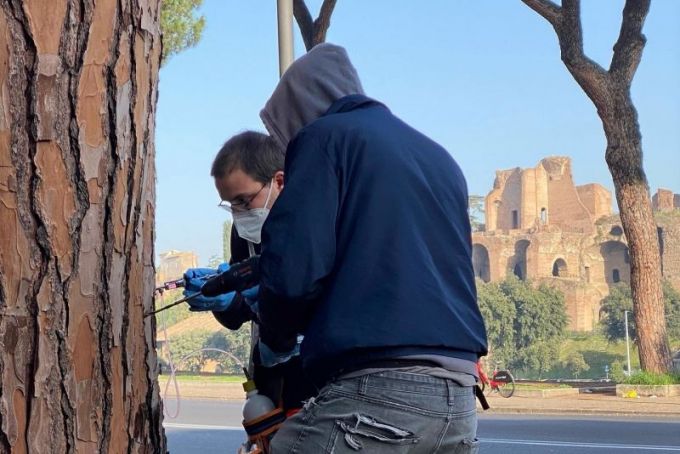Lazio region funds race to save Rome's pines from deadly parasite
Rome's pine tree situation "is now an emergency and requires immediate reaction," says Lazio governor.
The Lazio region has allocated half a million euro to fund efforts to save Rome's pines from being decimated by a deadly parasite called the pine tortoise scale cochineal insect.
The news was announced by Lazio governor Nicola Zingaretti in the wake of an urgent appeal to Italian president Sergio Mattarella by Italia Nostra, the organisation devoted to protecting Italy’s historic, artistic and environmental heritage.
"We listened to the alarm cry launched by Italia Nostra, by other associations, by neighbourhood committees and by citizens: the pines of Rome are a natural and cultural heritage that must be defended and saved," said Zingaretti.
The region had already instigated a programme to save the trees in 2019 in collaboration with the city of Rome - Zingaretti said - however due to the covid-19 pandemic the operation was not implemented.
"But now the situation is an emergency and requires immediate reaction: we are therefore ready to allocate €500,000" - said Zingaretti.
"It is necessary to act urgently, as early as the beginning of May, to counter the spread of cochineal through direct injections into the trunk with active ingredients that fight the parasite."
Zingaretti also pointed out that it be will necessary to map out a longer-term strategy in Rome and the Lazio region:
"We are planting millions of new trees in Lazio with the Ossigeno project. But first of all it is necessary to save those that already exist and that represent a fundamental reserve of beauty and well-being."
Environmentalists say the situation is Rome is at a "red alert" level, with pines at risk from the toumeyella parvicornis parasite throughout the capital, from the Imperial Forum to the city's suburbs.
On 14 April, after sending its appeal to President Mattarella, Italia Nostra met near Rome's ministry of agriculture building to ask the minister and the region to make the fight against mandatory by law.
Italian newspaper La Repubblica reports that he city has only €350,000 available to launch the campaign, but - added to the regional funding of half a million euro - hopes of saving the city's trees are increasing.
What does pine tortoise scale do to pine trees?
The deadly parasite feeds off the sap of trees and causes the spread of a sooty black mould, leading to extreme needle loss.
The pine fights back by generating new needles which, in turn, weakens the tree and exposes it to new attacks by the parasite. It is a vicious cycle that – if untreated – can kill the exhausted tree within two years.
What has Rome done to protect its pines so far?
Late last year the city undertook an experimental project on 200 pines in the Circus Maximus area, injecting the tree trunks with various treatments to counteract the parasite, as well as pruning infected branches and fertilising the roots.

Separately, a pioneering public-private project got underway at the Giardino degli Aranci, the orange garden on top of Rome's Aventine hill.
The project was the result of a collaboration between the city, the historic association Amici dell'Aventino, and Italian firm GEA Snc whose Nuovo Metodo Corradi™ (NMC) treatment is proving highly effective against parasites including the pine tortoise scale insect.
How to tell if pines are affected by the parasite
Rome residents may notice unusually heavy carpets of pine needles, covered in sticky honeydew, under the city's "umbrella" or "stone" pines.
Look up – if the tree's foliage has the appearance of being burnt then it is most likely the victim of the dreaded parasite.
Where did the pine tortoise scale parasite come from?
The highly-invasive bug arrived in Italy from North America in 2015 and was first detected in the southern Campania region, around Naples.
The pest has since spread out across south-central Italy at an alarming rate, mainly in urban areas, reaching the southern fringes of Rome a couple of years ago.
As a non-indigenous species, the pest has no natural predator in Italy meaning that it can multiply and spread unchallenged by nature.
500 mila euro per salvare i pini di Roma dal parassita che li sta distruggendo.
Con il progetto #Ossigeno 6 mln di nuovi alberi ma innanzitutto salviamo quelli già esistenti che rappresentano una riserva di bellezza e benessere #LazioGreen #PiniRoma
➡️ https://t.co/71MdQB2O1w pic.twitter.com/N8VHkPaBBl— Nicola Zingaretti (@nzingaretti) April 14, 2021


















